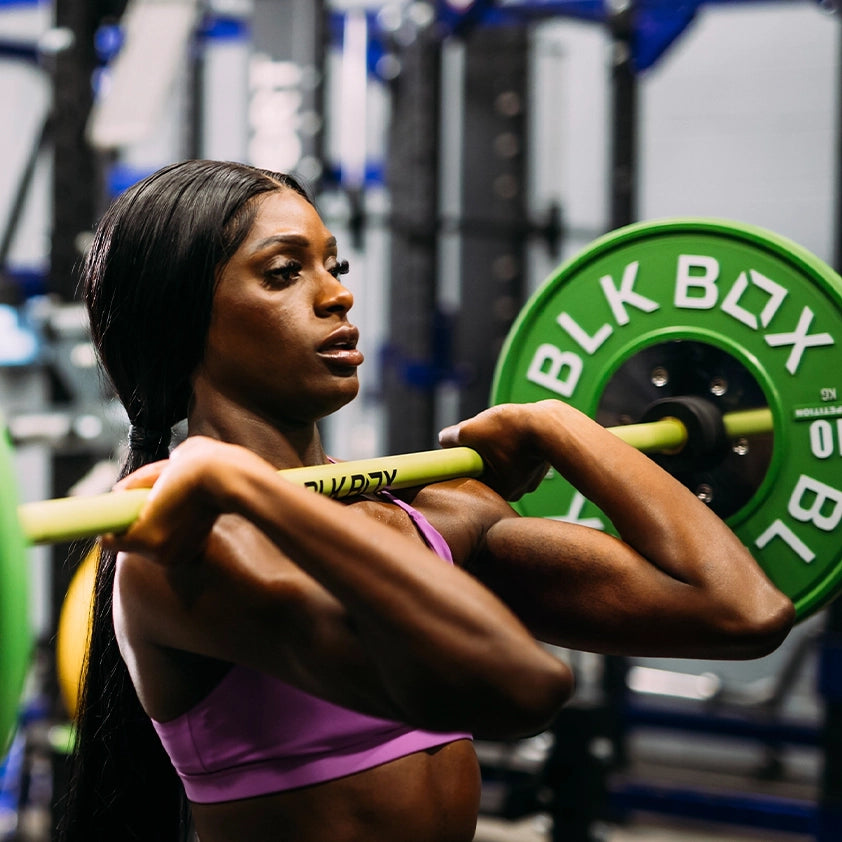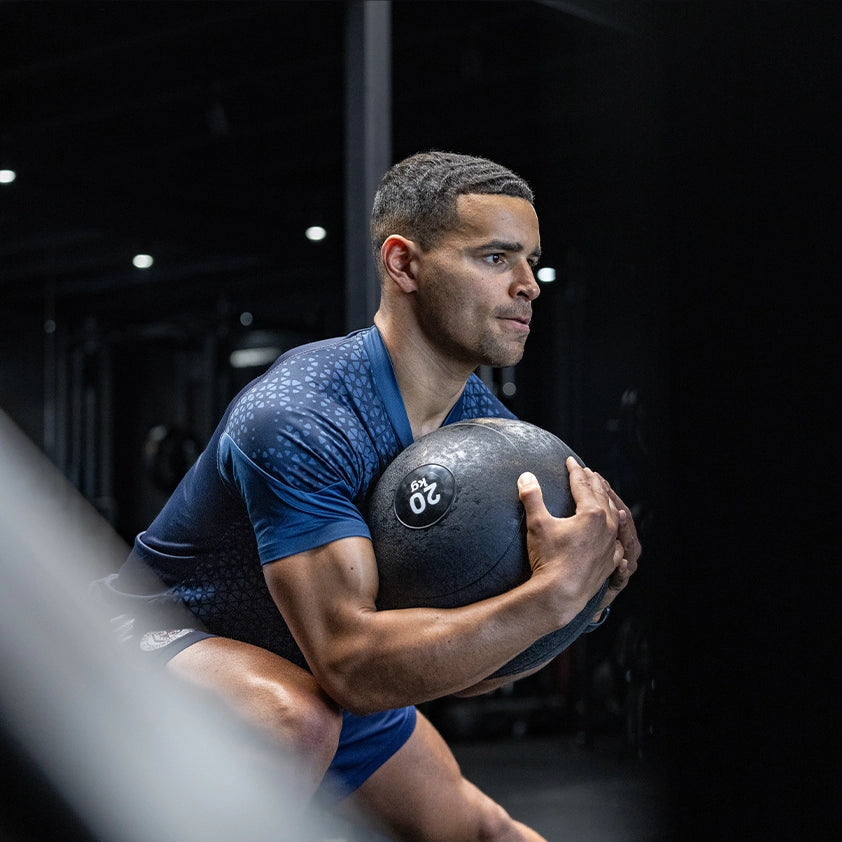Can You Gain Strength using the Kettlebell?
Written by Firas Iskandarani
I’ve probably been asked this question more times than I can remember in the past few months. So could the average gym-goer temporarily replace their normal set-up with a few kettlebells and still get stronger? Here goes…
The question is a little nearsighted. It’s like asking if you can gain weight just by eating biscuits. Ship me 3-4 crates of chocolate hob-nobs and I’ll show you ;)
So, here’s the simplified answer. Yes.
It’s generally accepted that to become stronger in a movement you need to spend the lion’s share of your training time in the 70-85% (of your 1RM) range. The majority of strength programs will have you accumulate reps here before taking you up to 85-95% for the “peaking” phase before testing.
So, provided you can load these movements with 70-85% of your max, you’re on the right path. Now if you can rep out 100kg for reps on the front squat, doing 32kg KB Goblet Squats isn’t going to do much for your strength. At this point it’s easy to dismiss kettlebells but the real issues are:
- Are you using the correct movements?
- Do you have kettlebells heavy enough to load them appropriately?
Before we get into that, it’s important to understand how we’re defining Strength. To do this we can split it into General & Specific varieties.
- Specific Strength pertains to a “Specified” Task and thus measuring it is easily done e.g. Ring Dips; what is the heaviest weight you can Ring Dip for X reps?
- General Strength is normally measured by the summation of a number of movements. e.g. Squat, Bench & Deadlift or Strongman style lifts.
It’s widely accepted that increasing General Strength sets you up better to increase Specific Strength and so a sound strength program will comprise multi-joint movements from which you can build a base after which specific goals can be focused upon if that is so desired.
Taking into account all the above, we need to build a program based on a few multi-joint movements and then load them sufficiently. For simplicity we can look at 4 movement patterns push, pull, squat & hinge and put in movements based on those.
Keeping the hinge movement to the side for a moment, I would choose:
- Single-Arm Overhead Press
- Single-Arm Row
- Goblet Bulgarian Split Squat
A weight that you could do a maximum of 8-10 continuous repetitions would normally sit you in the middle of that 70-85% range and for most people, you could load all three of those movements with just two different kettlebells. If you’re fortunate enough to have more, then you could also consider double-arm variations.
And now for the hinge, this one is slightly different, as we’ll be using ballistic movements, the explosive nature of which means a much higher muscle fiber recruitment. My choice:
- Single-Arm KB Swing
Here as we’re using a ballistic movement, we’re looking for power endurance and so want something we could work with for 10-20s without a noticeable drop in speed, which still would be challenging.
Again, if you have a heavy enough bell you could do a Two-Arm Swing.
At this point, it would be customary to wax lyrical about the benefits of kettlebell training. To discuss the extended position of the centre of mass and all the associated benefits. But in truth, considering the current worldwide situation, the simple answer is, between various forms of “ballistics” (e.g. swings & snatches) and “grinds” (e.g. presses & squats) you have a very versatile strength and conditioning training tool. One that will fit in your studio flat without causing unnecessary friction between you the other inhabitants. And let’s face it, if you had space to house a barbell and a rowing machine in your living room, you probably wouldn’t be reading this.
So, crashing back to reality, we can now build a 3 day-a-week program, with high, medium and low volume days for the three grinds. Something like:
|
|
Mon |
Wed |
Fri |
|
Squat |
High |
Medium |
Low |
|
Push |
Low |
High |
Medium |
|
Pull |
Medium |
Low |
High |
And what do these volumes pertain to?
- Low: 4 sets of 2-4 reps
- Medium: 5 sets of 3-5 reps
- High: 6 sets of 4-6 reps
Every two weeks add another set to each exercise for a total of 8 weeks, after which it might be time to test or simply take a week off and then rinse and repeat.
Personally, I like rep ranges (as opposed to a specific defined value) to give variation between sets or just for a bit of a break on days when you aren’t feeling quite up to it. You could complete the exercises in straight sets or as super/giant sets in a circuit fashion. But we’d want ample rest between sets so think more “for quality” less “for time.”
And what about the Swings?
You can use these Two-Arm Swings as a warmup (maybe 3 sets of 10) and then add the Single-Arm Swings in at the end (~5 sets of 10 each side)
Anything else?
If I were to add in anything else, I’d go with Get-Ups to the warmups and carries to the “finishers”.
So, warmups would now look like: 3x (1 Get-Up each side + 10 Two-Arm Swings)
And the finishers would be comprised of Single-Arm Swings combined with single or double arm, overhead, front rack or suitcase carries, vary these up as your equipment allows.
PSA: Be careful of combining Suitcase Carries with Single-Arm Swings as it can get grippy!
Now for many of you, you could do all of that with 2-3 Kettlebells.
So, can you get strong training at home with a few kettlebells? Why not try and see for yourself?

About the author Firas Iskandarani
We’ve all heard of Gymbox, one of the most popular fitness scenes in London. Firas Iskandarani is their Master Trainer and the man behind the classes that leaving people wanting more. As the Functional Master Trainer, Firas’s has the responsibility of educating all Gymbox coaches for their class concepts, in which he has developed himself. Alongside his role for Gymbox, Firas is a Mechanical Engineer and currently working towards a PhD in Mechanical & Bioengineering. Amongst many other qualifications, Firas is a StrongFirst Level ll instructor, a certification in which we highly respect at BLK BOX.















